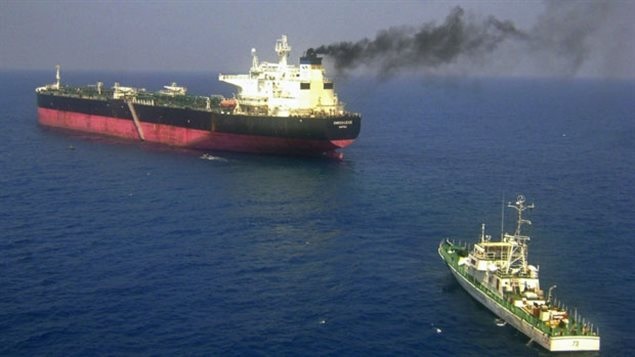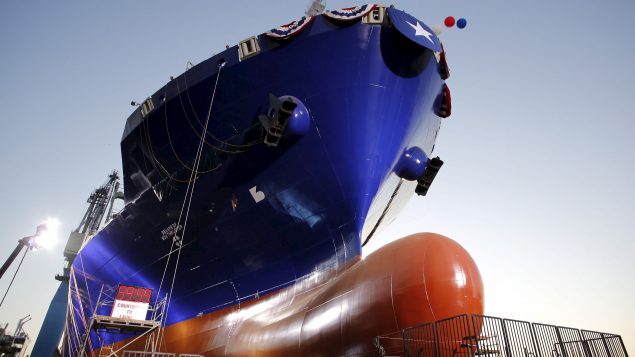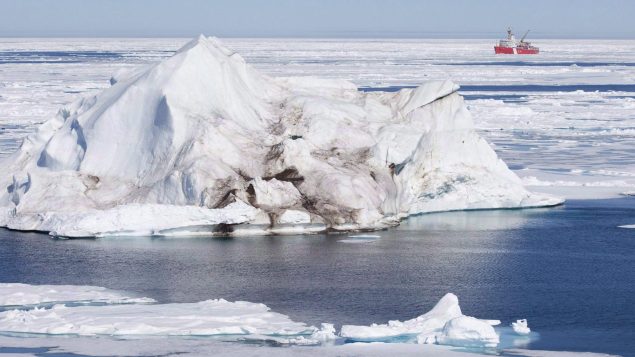As the world maritime body prepares to consider a Canadian proposal to mitigate the risks of heavy fuel oil pollution in the Arctic, Ottawa is trying to water down a plan by Finland for an outright ban of the highly polluting fuel — used by most ships plying the rapidly warming Arctic.
The International Maritime Organization (IMO), the United Nations’ agency regulating maritime shipping, will discuss the issue of heavy fuel oils (HFO) in the Arctic at the upcoming 72nd session of its Marine Environment Protection Committee (MEPC) in London in early April.
The use of HFOs is already banned in the Antarctic. Several environmental and Indigenous groups are calling for a similar ban in the Arctic.
“A ban is the simplest and most effective mechanism for mitigating the consequences of a spill and reducing harmful emissions,” said Sian Prior, lead adviser to the Clean Arctic Alliance, a coalition of international NGOs campaigning for a mandatory HFO ban.
Ban HFO by 2021, says Finland

U.S. Secretary of State Rex Tillerson hands the Arctic Council gavel over to Finland’s Minister of Foreign Affairs Timo Soini in Fairbanks, Alaska on Thursday. (Linnea Nordström/Arctic Council Secretariat)
Documents obtained by Radio Canada International show that as part of the discussion of the Canadian proposal, which was adopted at MEPC’s session in London last July, Finland has submitted a plan to the MEPC to ban the use and transport of HFOs by ships in Arctic waters by 2021.
Finland’s proposed ban — which would be mandatory for all ships operating under the International Convention for Prevention of Pollution from Ships (MARPOL) — is co-sponsored by Germany, Iceland, Netherlands, New Zealand, Norway, Sweden and United States.
“A single HFO spill could have devastating and lasting effects on fragile Arctic marine and coastal environments,” the Finnish proposal says. “In addition, Arctic shipping is projected to continue to rise, thus increasing the risk of a spill.
“For these reasons, the ban on HFO should be implemented as soon as possible, and any delay in implementation of the HFO ban by eligible ships should be short-lived.”
Not so fast, says Canada
In a document submitted by Canada and the Marshall Islands in response to the Finnish proposal, Ottawa argues against rushing to an outright ban too quickly.
While agreeing that “the threat of an accidental oil spill in Arctic waters remains the most significant threat from ships to the Arctic marine environment,” Ottawa urges the IMO to consider “economic and other impacts to Arctic communities associated with the restriction or phase-out of heavy fuel in Arctic waters.”
Officials at Transport Canada declined to comment on Canada’s position.
Andrew Dumbrille, a World Wildlife Fund Canada specialist in sustainable shipping, said it looks like the Trudeau government is signalling that it needs more time.
“My reading of it, and talking to some officials, is that Canada is still in favour of this moving forward and needs time to consult with stakeholders before committing to a full-on ban on the timeline that’s been suggested by the Finland paper,” he said.
Dirty and cheap

An example of a cargo ship emitting black, sulphur dioxide and soot-laden smoke from burning HFO (bunker fuel). Finland is proposing a mandatory ban on use and carriage of HFO by ships operating in the Arctic. (Indian Navy/Associated Press)
Heavy fuel oil (HFO), also known as bunker oil, is the cheapest, the dirtiest and most common type of fuel used in maritime shipping, Dumbrille said.
According to a report by the International Council on Clean Transportation (ICCT), the thick, viscous fuel oil produces high amounts of soot, particulate matter and black carbon.
Although only 42 per cent of ships in the Arctic waters covered by the IMO’s Polar Code operated on HFO in 2015, these ships accounted for 76 per cent of fuel carried and 56 per cent of fuel transported in this region, the ICCT report said.
In addition to its toxicity, HFO is extremely viscous and breaks down more slowly in the marine environment than other fuels, particularly in colder regions like the Arctic, according to IMO documents.
“Studies show that while 90 per cent of HFO remains after 20 days in the ocean, marine diesel can take as few as three days to break down,” the documents said.
HFO’s persistence makes it more likely that it will reach and pollute the shoreline in the event of a spill, the report said.
Threat to Inuit livelihoods

Inuit girls in traditional dress play on the rocks in Pangnirtung, Nunavut, Thursday, July 5, 2007. Stephanie Meakin, senior science adviser at Inuit Circumpolar Council (ICC), says heavy fuel oils pose a threat to the Arctic environment that sustains Inuit communities. (Jeff McIntosh/The Canadian Press)
For these reasons, environmental groups and Indigenous organizations are calling on the shipping industry to switch to alternative fuels such as diesel and liquefied natural gas (LNG).
Stephanie Meakin, senior science adviser at Inuit Circumpolar Council (ICC), said the health and well-being of Inuit are inextricably tied to the Arctic marine environment.
“HFO’s are a threat to Inuit livelihoods, the health of Inuit and Inuit food security because HFOs are almost impossible to clean up in Arctic waters,” Meakin said.
A report commissioned by the Arctic Council’s Protection of the Arctic Marine Environment (PAME) Working Group found that “significant risk reduction will be achieved” if the industry switches to distillate types of fuel, such as diesel, instead of relying on heavy fuel oil.
A costly proposition

The Isla Bella, the first container ship to be powered by liquid natural gas, is pictured before her launch during a nighttime ceremony at General Dynamics NASSCO shipyard in San Diego, California April 18, 2015. The 764-foot Marlin-class containership was built for the transportation and logistics company TOTE. (Earnie Grafton/REUTERS)
However, retrofitting existing vessels to operate on these new fuels is a costly proposition, and these alternative fuels are more expensive than bunker oil.
“Who is going to be burdened by those costs is still a question and nobody wants Arctic communities to be burdened with those costs,” Dumbrille said.
“Finding a pathway to phase out or ban heavy fuel oil without it burdening goods in Arctic communities is what everyone wants to do … The Canadian government needs to figure out that pathway and they haven’t yet.”
ICC is working with the federal government to reduce the region’s dependence on HFO, find cleaner fuel alternatives and provide cost-effective shipping for communities, Meakin said.
“ICC believes that any new environmental protection in the Arctic shouldn’t economically burden communities and recognizes that policies need to be put in place to allow a transition away from polluting fuels such as HFO,” he said.
“This will require supports that allow fuel re-supply and shipping companies to transition to cleaner and safer Arctic fuels without passing on the increased fuel costs to customers in the north.”
Sonia Simard, director of Legislative and Environmental Affairs at the Shipping Federation of Canada (SFC), said her organization, which represents and promotes the interests of foreign-flagged vessels sailing in Canadian waters, is not yet in a position to comment on the issue as it’s still consulting with its membership.







For reasons beyond our control, and for an undetermined period of time, our comment section is now closed. However, our social networks remain open to your contributions.